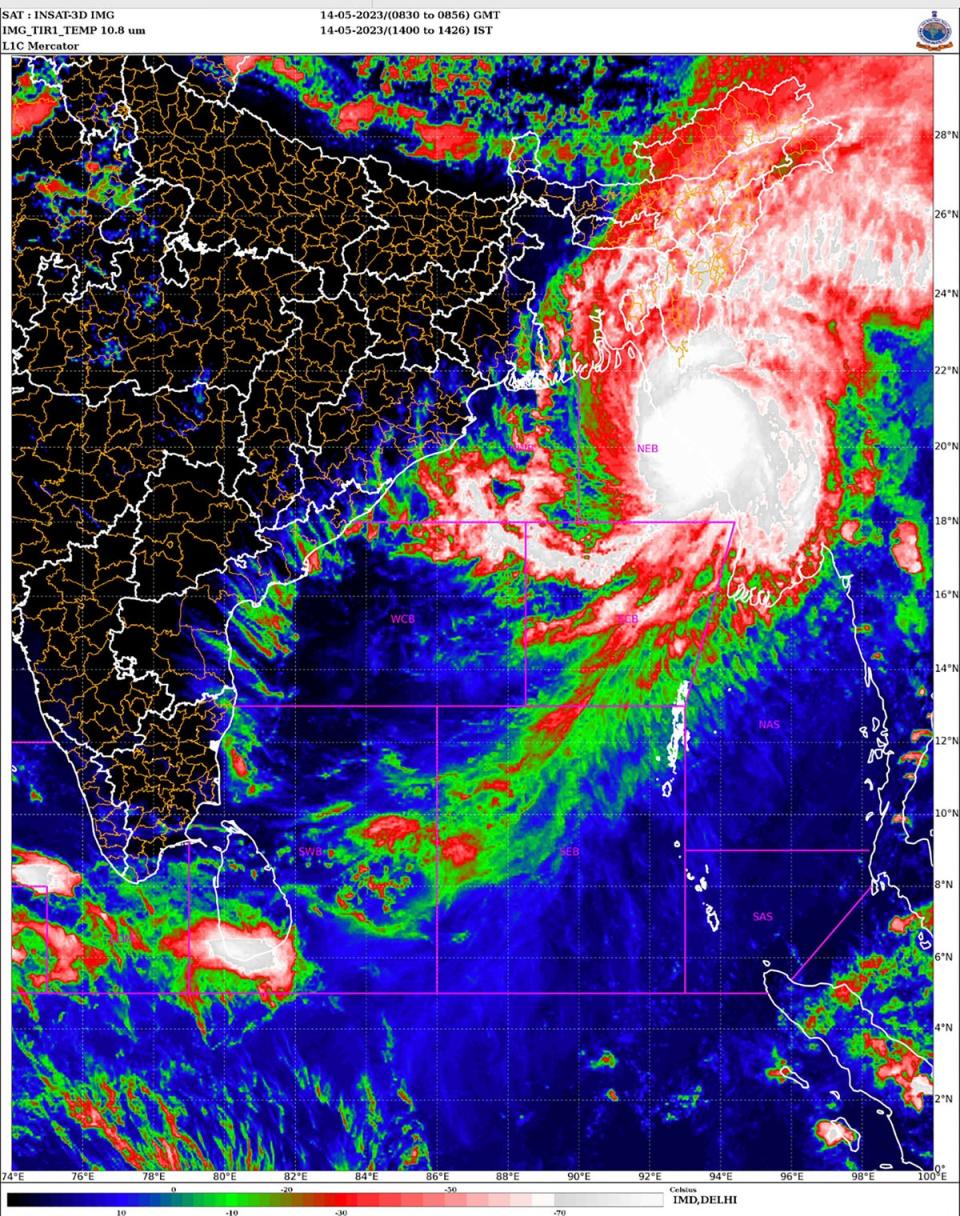Cyclone Mocha: Six dead and widespread destruction after storm makes landfall in Myanmar
At least six people have died and over 700 left injured after powerful tropical cyclone Mocha made landfall in Myanmar on Sunday, flooding roads, destroying houses and knocking down communication towers.
Mocha, one of the most powerful storms to hit Myanmar in years, had wind speeds of up to 209 km/h and led to heavy rains in the western parts of one of Asia’s least developed countries.
So far, six deaths have been reported by local media, with over 700 reported injured. But the true scale of the damage is yet to be known in the country run by the junta.
Rescuers on Monday evacuated about 1,000 people trapped by seawater 3.6 meters (12 feet) deep along western Myanmar’s coast.
Reuters reported that 20,000 people were taking shelter in monasteries, pagodas and schools on the city’s highlands, quoting a leader of the Rakhine Youths Philanthropic Association in the city of Sittwe, who refused to be named due to fear of reprisal from authorities.
The volunteers said there was not enough food in the shelters. Myanmar’s state-run television reported that the military government was preparing to send food, medicine and medical personnel to the storm-hit area.
Injuries were also reported in neighbouring Saint Martin’s Island in Bangladesh, which was largely spared by the cyclone amid fears of it directly hitting the world’s largest refugee settlement in the country’s Cox’s Bazar.
Approximately 300 homes were also reported either damaged or destroyed in the western parts of Bangladesh.
The cyclone had already weakened to a Very Severe Cyclonic Storm when it made landfall and, by Monday morning, it was a Severe Cyclonic Storm.

The UN Development Programme’s representative in Myanmar, Titon Mitra, tweeted that Mocha put two million people at risk and damage and losses were expected to be extensive.
Mocha has made landfall. 2m people at risk. Damage and losses are expected to be extensive. We are ready to respond and will need unhindered access to all affected communities. #whatsHappeningInMyanmar @UNDPasiapac @UNDP pic.twitter.com/GPaC1BQSwQ
— titon (@TitonMitra) May 14, 2023
Experts have raised concerns about a humanitarian disaster, as the state of Rakhine, where the cyclone hit most severely, is a conflict zone and already has around 6 million people in need of humanitarian assistance living within its borders.
“The needs in Myanmar are huge. Rakhine was already a poverty hit state before the powerful cyclone Mocha hit. The impact of this cyclone will be very high in Myanmar’s Rakhine state because of the existing conflict and the extremely poor socio economic condition of the people in Rakhine state,” said Sharif Ahmed, Islamic Relief head of programmes for Myanmar and Bangladesh.
“Poverty is very high and is the primary reason this storm will have such a destructive impact on these people and their lives.”
The weakening cyclone was forecast to hit the northwestern state of Chin and central regions on Monday.
Meanwhile, the India Meteorological Department (IMD) had issued an “orange alert” for heavy rainfall in parts of northeast India.
There has been a substantial increase in cyclonic activity in south Asian waters linked to rising ocean temperatures, according to experts.
Warming in the oceans has led to higher evaporation and increased availability of moisture due to global heating. Experts said cyclones can now retain their energy for many days and cause extensive devastation.
“Weather conditions in the ocean are very supportive for rapid intensification of the system,” said Roxy Mathew Koll, climate scientist at the Indian Institute of Tropical Meteorology and Lead IPCC author.

“Cyclones nowadays can retain their energy for quite a long number of days. One example of this trend was Cyclone Amphan which continued to travel over land as a strong cyclone and resulted in massive devastation.
“As long as oceans are warm and winds are favourable, cyclones will retain their intensity for a longer period.”
Tropical cyclones are one of the most devastating natural disasters, costing more than half a million lives all over the world in the last five decades.
The Indian Ocean region, including the Arabian Sea and the Bay of Bengal, is of particular concern because of the high population density along its coastlines.
Cyclone Nargis hit Myanmar in 2008 with a storm surge that devastated populated areas around the Irrawaddy River delta, killing at least 138,000 people.

